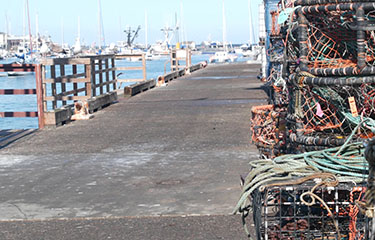Pew Charitable Trusts hosted the first global summit on the topic of artificial intelligence (AI) in fisheries monitoring on 17 and 18 January, 2023.
The conference hosted data scientists, analysts, researchers, and policymakers to start the conversation on how AI can improve fisheries management.
The Pew Charitable Trusts International Fisheries Senior Associate Raiana McKinney summarized the three main topics discussed at the summit. The first, she said, is managing expectations between stakeholders so groups understand what is possible, what is required, and what can run into regulatory issues. The second is defining what success for an AI means.
"There's a fine balance between the minimum precision that's needed for accurate data versus how we define success for these applications,” McKinney said.
The last topic, she said, is actually moving AI from a "proof of concept" to a "fully integrated and approved tool."
"This is currently a slow process, and we heard from a lot of attendees that it's important for governments to clearly identify AI as an essential tool for existing management problems," McKinney said.
Multiple companies pioneering AI solutions for fisheries monitoring attended the summit, including CVision AI. CVision AI was founded approximately seven years ago to build AI and software for video-based analytics. The focus has been on activity recognition to reduce the amount of data that either must be collected or transferred to bring down overall costs.
“It can be extremely important when it comes to sustainable fisheries because the costs of things like at-sea monitoring, to get good fisheries management practices, is just not sustainable," CVision AI CEO and Co-Founder Benjamin Woodward said. "Therefore, we need to move towards electronic monitoring and reduce the costs associated with that, specifically video review, and that's where I see AI helping the most. Helping human analysts become more efficient at churning through large volumes of video.”
Woodward said there's a "hierarchy" of potential uses for AI, from easier to harder.
"The first is activity recognition. The broad idea of something interesting is happening that gets flagged by the AI. Then, a video analyst will look at this section of flagged video for further review," Woodward said. "This can cut close to 90 percent of the recorded video down to only the interesting fishing events, especially on multi-day or multi-week cruises."
From there on down, the steps get more complicated, with each one further reducing the workload on human observers ...
Photo courtesy of Dogora Sun/Shutterstock








